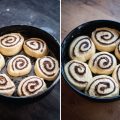Achieving that perfect balance of tangy sourness in homemade sourdough can seem intimidating. But with the right techniques, you can intentionally craft custom loaves spanning from mildly sour to thrillingly tart. This guide will uncover the secrets that transform simple ingredients into transcendent sourdough, empowering you to master the nuances of fermentation and intentionally develop layered complexity. The goal by the end of this post is to gain control over sourness so you can create your signature sourdough that delights your taste buds with an addictive acidic bite!
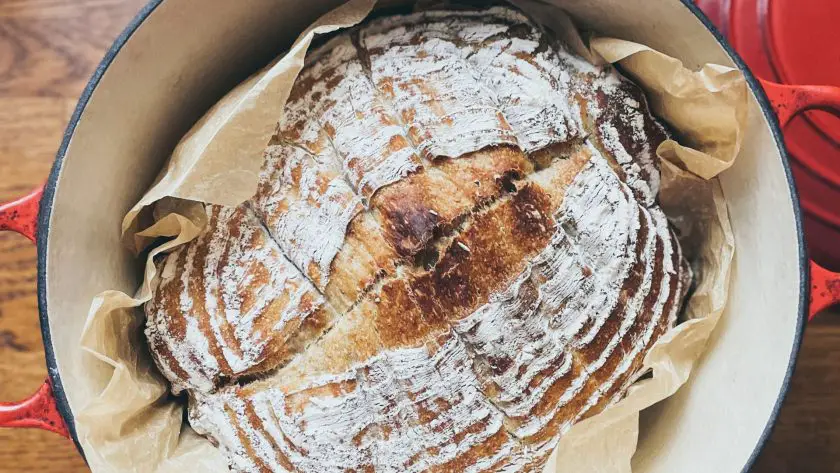
Table of Contents
- What You Can Do to Make Sourdough More Sour
- The Role of Acidity in Sourdough Sourness
- Ingredients Impacting Sourdough’s Sourness
- Experimenting with Different Flours for A More Sour Flavor
- Hydration’s Role in Sourdough Sourness
- Fermentation: Key to Sourdough’s Sourness
- The Role of Time in Developing Sourness
- Manipulating Sourness through Starter Maintenance
- Proofing Techniques for Enhanced Sour Flavor
- Baking Techniques for Maximizing Sourness
- Pairing Sourdough with Foods to Enhance Sourness
- Health Benefits of Sour Sourdough Bread
- There are Many Ways to Make Sourdough More Sour
- More Sour Flavor Sourdough FAQs
What You Can Do to Make Sourdough More Sour
Several factors contribute to a more sour sourdough bread. Here’s a quick summary of what affects the tangy flavor, and what you can do to increase it:
- Whole grain and rye flours result in more sourness compared to white flour. Use whole grain flours like whole wheat (like in my whole wheat sourdough recipe), rye, or sprouted flours which provide more food for bacteria, increasing acid production.
- Ferment with unchlorinated spring or filtered water with a pH around 6.5-7 for optimal bacterial activity.
- Allow for long, slow fermentation of at least 4-12 hours to enable more lactic and acetic acid development. Longer fermentation allows for more acid development, enhancing sourness.
- Ferment starter and dough at cooler 65-75°F temperatures which favor more bacterial sourness. Warmer temperatures and increased oxygen presence increase acetic acid production.
- Refresh starter frequently at its peak rise for vigorous bacterial activity and acidity.
- Use a mature, bubbly, pleasantly sour starter for maximum acid contribution. A mature, active starter produces more acids, contributing to a sourer bread.
- Reduce the salt to 1.5-2% of flour weight to allow more bacterial sourness.
- Increase dough hydration to at least 75-80% for wetter environment ideal for bacterial growth. Wetter doughs (higher hydration) result in more sour bread.
- Longer proofing times and retarding the dough in the fridge can enhance the sour flavor. Cooler proofing temperatures also favor more lactic acid bacteria activity.
- Shape dough tightly and score decoratively before baking to maximize oven spring and enhance sourness.
- Initially bake at high 475-500°F temperature to set loaf structure then lower to 400°F to finish baking.
- Generate steam at baking start to fully expand loaf and release sour aromas.
- Allow loaf to fully cool before slicing to stabilize texture and flavors.
Each of these factors can be manipulated to achieve the desired level of sourness in sourdough bread. We’ll get into more details in this article, so we can understand better what makes the sourness develop more.
The Role of Acidity in Sourdough Sourness
When we think of sourdough, that tangy, tongue-tingling taste is what often comes to mind first.
So what creates the signature sourness that makes sourdough so addictive? The answer lies in the acids produced during fermentation.
Acids Develop Flavor
Organic acids are essential for building sourdough’s complex flavor profile. Acetic and lactic acids are the primary acids responsible for sourness. The concentrations and balance of acids influence the intensity and qualities of the sour taste.
As the yeast and bacteria ferment the dough, they produce acids as byproducts. The longer the ferment, the more acids develop. The acids create sourness while also helping leaven the dough.
pH
Sourness corresponds to the dough’s acidity levels. Acidity is quantified by the pH, which measures hydrogen ion concentration. The lower the pH, the more acidic and sour the dough.
For sourdough, a pH of 3.8-4.5 is typical. The ideal pH depends on the style of bread. San Francisco sourdoughs tend to be more acidic with a pH around 3.8-4.2. Milder sourdoughs have a higher pH near 4.5.
Lactic Acid
Lactic acid is produced by lactic acid bacteria such as lactobacilli. It has a mild, tangy flavor. Lactic acid also strengthens gluten, aids moisture retention, and prevents mold.
A balance of lactic acid creates pleasant sourness without excessive sharpness. Higher fermentation temperatures decrease lactic acid activity.
Acetic Acid
For more assertive sourness, acetic acid is key. Acetic acid has a vinegary bite. It is formed when alcohol from yeast fermentation converts to acetic acid from acetic acid bacteria.
Too much acetic acid can make the bread one-dimensionally sour. But a touch of acetic acid gives sourdough its signature sour punch. More oxygen exposure during fermentation increases acetic acid.
Getting the Acid Balance Right
Skillful bakers manipulate fermentation conditions to achieve the ideal lactic-to-acetic acid ratio for balanced sourness. Lower temperatures, higher hydration, and a mature starter favor more lactic acid contribution. Warmer temperatures and increased oxygen presence boost acetic acid production.
The longer the fermentation, the more acids build. But excessive acidity can inhibit the yeast, so monitoring pH levels is important. Ideally, the acids should provide a sour flavor without being too overpowering.
Acidity Impacts Browning and Rise
The acids break down gluten proteins, making the dough more extensible. This enables greater oven spring. Acids also promote Maillard browning reactions for flavorful crust development.
Too much acidity can weaken the gluten and inhibit rise. The acids lower pH, which slows yeast fermentation. Finding the sweet spot of acidity is key for the best structure and lift.
Taste as You Go
The best way to determine if your sourdough has the right acidic bite is to taste it!
Sample the starter and dough at intervals as acids develop. The sourness will intensify and complexity will build throughout fermentation.
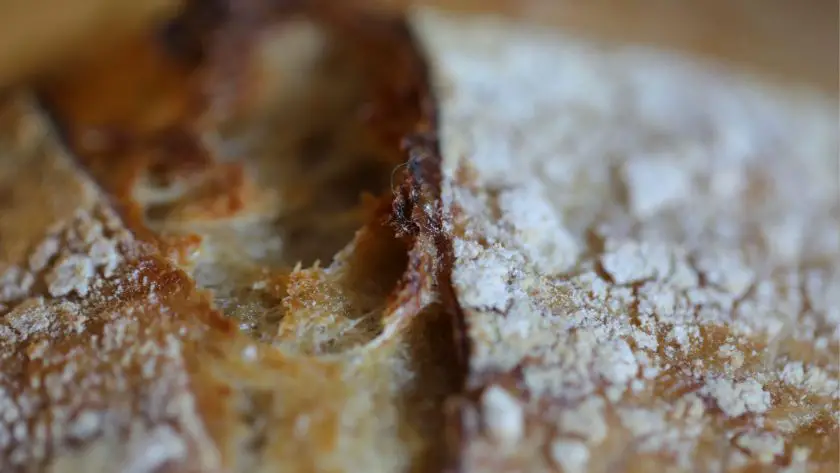
Ingredients Impacting Sourdough’s Sourness
When it comes to making your sourdough more tangy and tart, the ingredients you use can have a huge impact. Let’s take a look at some of the key players that affect the sourness level.
Flour Types
Whole grain flours amp up the sour flavor in sourdough. The bran in whole wheat flour contains extra food for the yeast and bacteria to munch on, leading to more acidic byproducts. Rye flour is especially known for making super sour loaves thanks to its low gluten content. Experiment with combining unbleached bread flour with 30-50% whole grains like whole wheat, rye, or sprouted flours.
Water Quality
The minerals and pH of your water influence how sour your sourdough will get. Unchlorinated spring or filtered water gives the best boost to sourness since the wild yeast and bacteria thrive without chlorine. The ideal pH for optimum sourdough tang is around 6.5-7. Give your tap water a taste test – if it has a plasticky flavor, try switching to bottled spring water instead.
Duration of Fermentation
Allowing your sourdough starter and dough a long, slow ferment gives the bacteria time to produce those acidic compounds that equal major sour power. Let your starter double or triple in size before using it in a recipe. During bulk fermentation, allow the dough to slowly ferment for 4-12 hours at cool room temperature. The longer the ferment, the more sour the bread.
Temperature
Fermenting your sourdough starter and dough at cooler temperatures between 65-75°F will promote a tangier rise. The wild yeast and bacteria responsible for those sour notes prefer to work slowly in cooler conditions. Avoid proving your sourdough dough much above 80°F.
Whole Grains
Whole grains contain the bran and germ which provide additional food sources for sourdough cultures. This enables them to produce more organic acids and CO2 which translate to amplified sourness. Some great whole grain choices are whole wheat, rye, buckwheat, spelt, and sprouted wheat. Start with 30% whole grain flour in your recipe and increase from there.
Salt
Salt helps moderate the sourness produced by the bacteria.
To get a tangier sourdough, reduce the amount of salt in your recipe to around 1.5-2% of the flour weight. You can always add a sprinkling on top after baking if needed.
Starter Age & Activity
A mature, active starter with good bubbly rise at its peak will give a far sourer outcome than a younger or less vigorous one. Let your starter double or triple in size after each feeding for at least a week before sourdough baking. Check for a pleasantly sour aroma and bubbles throughout. The older and stronger your starter, the more acid it produces.
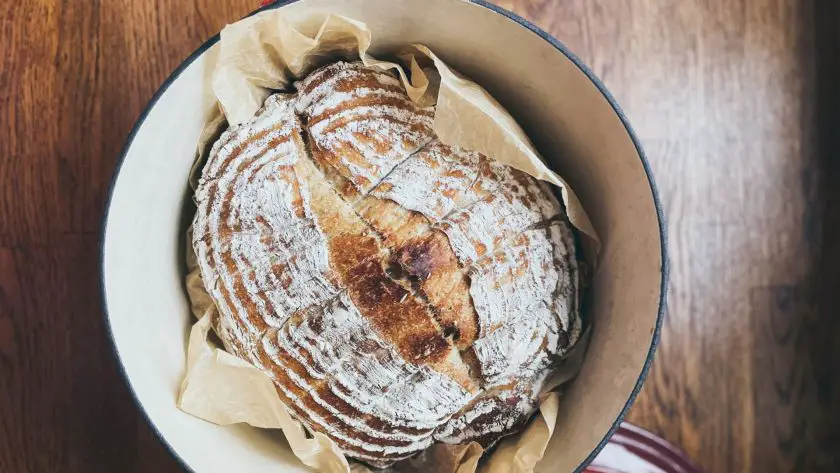
Experimenting with Different Flours for A More Sour Flavor
Bakers have long known that the type of flour used can greatly influence the sourness of sourdough bread. Playing around with different flours opens up a whole world of flavor possibilities for sourdough. While all-purpose white flour produces a milder loaf, whole grain and rye flours really kick up the tartness.
Check out this breakdown of how different flours impact that tangy sourdough flavor.
Whole Wheat vs White Flour
Swapping out some or all of the white flour for whole wheat makes a major difference in sourness. The bran in whole wheat provides extra food for the sourdough critters to munch on. This enables them to produce more organic acids like lactic and acetic acid responsible for that sour tang. Whole wheat results in a more complex, multilayered sourness compared to white flour alone.
Start by substituting 30% of the white flour in your recipe with whole wheat flour. You can work up to 100% whole wheat once your starter is accustomed to the change. Just keep in mind that whole wheat loaves will rise a bit less due to the lower gluten content.
Adding a Touch of Rye
For supremely sour loaves, consider working in some rye flour, which contains less gluten than wheat. The rye gives lactic acid bacteria even more to feed on, and they reward you with extra sour notes. Substitute 10-20% of the wheat flour in your recipe with dark rye flour and you’ll get a nice tangy rye sourdough.
You can also use rye flour to create a liquid levain starter that packs a sour punch. Mix 1 part rye flour with 1 part water by weight and let it ferment for 24 hours. Then refresh with equal parts flour and water every 8-12 hours for a starter with seriously sour power.
Consider Spelt and Sprouted Flours
For a milder, nuanced sourness, try incorporating some spelt flour. Spelt is an ancient grain related to wheat. It has a mellow nutty flavor that blends nicely with sourdough’s acidic notes. Start by swapping 10-30% of the wheat flour for whole grain spelt flour.
I have a recipe for spelt sourdough bread, so you can try it right away!
Sprouted wheat flour is another good option, made from germinated wheat berries. The sprouting process increases the vitamins and makes the flour more digestible. Substitute up to 30% of your regular flour with sprouted wheat flour for a tangy but mellow sourdough.
Lower Gluten Means More Sour
In general, flours lower in gluten like whole wheat, rye, and spelt allow the lactic acid bacteria to thrive even more. The sourdough microbes have an easier time breaking down and fermenting flours that are lower in gluten. For milder sourness, stick with mostly bread flour which has a higher gluten content.
Give Flours Time to Adapt
When swapping flours, allow your starter and dough time to adjust to any new flour’s enzymes and properties. For starters, transition to the new flour over a few feedings. For dough recipes, let the sourdough bulk ferment a bit longer at first to allow the critters time to break down the new flour.
Hydration’s Role in Sourdough Sourness
When making sourdough, the amount of water you use (aka the dough hydration) directly impacts the texture, rise, and yes, the sourness of the final bread. Finding the right hydration level takes some experimentation, but can transform your sourdough.
More Water Equals More Sour
In general, higher hydration doughs allow more acid production during fermentation. The extra moisture enables the lactobacilli to thrive and produce more organic acids that add sourness. High hydration (80% and above) leads to an ultra moist, holey crumb with a pleasantly chewy texture.
Start with 75-80% hydration for a nice tangy sourdough with a soft crumb, and increase in 5% increments if you want even more sour power. Just keep in mind that wetter doughs can be trickier to handle when shaping.
On the flip side, lowering the hydration tempers the sourness and results in a tighter, denser crumb and firmer texture. For a more mild sourdough, try 65% hydration using the same recipe. The drier environment slows acid production.
Some bakers prefer a heartier loaf with a mellow sourness, which lower hydration provides. For beginners, a moderately hydrated dough around 68-72% may be easier to handle too.
Effect on Fermentation Time
Higher hydration doughs ferment more quickly, since the yeast and bacteria have plenty of moisture to thrive. Lower hydration doughs ferment more slowly.
Factor in the hydration level when determining your bulk fermentation time. For wetter doughs in the 80%+ range, the fermentation may only take 5-8 hours. Drier doughs around 65% hydration need longer like 8-12 hours.
Impact on Overall Rise
Increased hydration helps give you those spectacular oven-spring and big open crumb that artisan loaves are known for. The extra water creates more steam during baking. This steam lifts and expands the dough structure.
With lower hydration around 60-65%, the crumb will be tighter and the rise more modest. You can still get great flavor at this hydration, but may not achieve that signature holey chew.
Fermentation: Key to Sourdough’s Sourness
Fermentation is truly the engine driving sourdough’s signature tang. This complex microbial process enables the production of organic acids that provide sourdough with its characteristic pleasantly sour taste. Controlling fermentation is key to achieving your ideal level of sourness.
Time Equals Sourness
The longer the fermentation time, the more sour flavors can develop in the dough. Allowing for an extended ferment gives the yeast and bacteria time to produce acids as byproducts of their metabolism.
For starters, let the starter double or triple between feedings. For dough, aim for at least 4-12 hours of bulk fermentation time. The longer the rise, the tangier the bread will become. But don’t over-ferment or the acids may overwhelm.
Cooler Temperatures Boost Sourness
Fermenting at a cooler ambient temperature between 65-75°F promotes increased production of lactic and acetic acids for a tangier sourdough. The yeast and bacteria thrive in a more leisurely fashion at lower temps.
Letting the dough rise in the fridge overnight is an easy way to extend fermentation. Just allow extra time for the dough to warm up before shaping and baking.
Warmer Temps Give Milder Sourness
When fermentation occurs at warmer temperatures above 80°F, acid production is hindered, resulting in a milder sourdough. The accelerated yeast activity outpaces bacteria growth.
If you prefer a mellower sour taste, aim for a fermentation temperature around 80-85°F. The quicker ferment will limit acidification.
Schedule Starter Feedings
To control the starter’s microbe balance and acid levels, maintain a consistent feeding schedule. Feed at the peak rise when lots of bubbles are visible. Discard a portion before adding fresh flour and water.
Frequent, smaller feedings favor more bacterial activity for increased sourness. Less frequent feedings boost the yeast’s role.
Balancing Salt Levels
Salt helps moderate the organic acids produced by bacteria. To make a tangier loaf, use 1.5-2% salt by flour weight. For a mellower sourness, increase the salt to 2-2.5% of the flour weight.
Adjusting Hydration
Higher hydration doughs ferment more quickly as the yeast and bacteria have abundant moisture. Lower hydration slows fermentation. So factor in hydration when determining fermentation times.
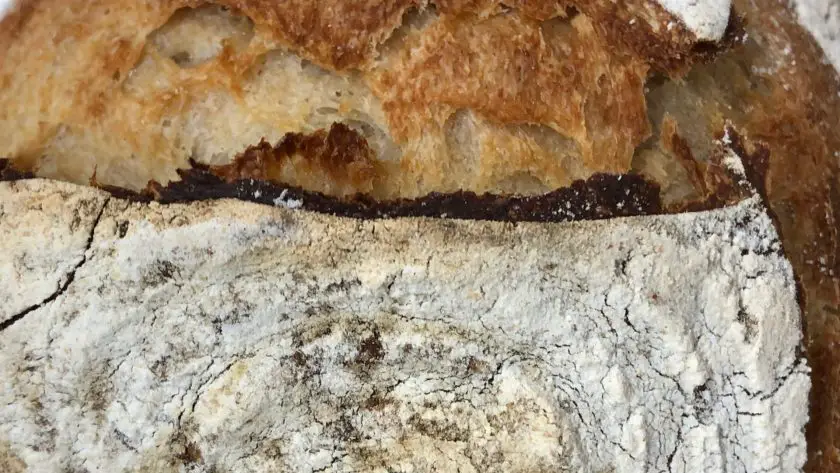
The Role of Time in Developing Sourness
When it comes to making a tangy sourdough, time is one of the most powerful tools at your disposal. Allowing adequate aging time for both the starter and dough enables fuller flavor development and acidification. Taking it slow is key for superb sourness.
Let Starters Mature
Maintaining a starter over several weeks or months gives it a chance to develop complex microbial communities that yield balanced, pleasant sourness. Feed and refresh an established starter frequently to keep it vigorous. Discard most of it before feeding to control acidity.
A mature starter with bubbles and a pleasantly sour aroma has highly active yeast and bacteria that produce more acids during bread fermentation. Using it at its peak rise delivers great oomph to your sourdough.
Extend Dough Fermentation
After mixing the final dough, allow for an extended bulk fermentation time – at least 4 hours, and up to 12. This gives the organisms time to produce lactic and acetic acids as they break down starches and sugars.
The longer the ferment, the more the sourness builds. For a moderately sour loaf, aim for 6-8 hours. For intensely tangy sourdough, ferment up to 12 hours at cool room temperature.
Retard Dough in Fridge
For maximum flavor development, consider retarding the shaped dough overnight in the fridge. The cool temperature slows fermentation while allowing acids to accumulate.
When ready to bake, let the dough warm up for 1-2 hours. The delayed fermentation makes for a wonderfully complex sour taste.
Adjust Feeding Schedule
The feeding frequency of your starter influences microbial activity. Frequent, smaller feedings every 8-12 hours promote more bacterial growth and acidity. Less frequent feedings allow more yeast activity.
Tailor the feeding schedule to maintain your ideal sourness level and starter vigor. Discard most of it before feeding to control acid buildup.
Taste as You Go
Taste the starter and dough periodically as time passes during their fermentation. The sourness and complexity will develop and deepen. This helps you learn how time transforms flavor.
Based on taste, you can adjust fermentation factors like temperature, feeding schedules and salt to fine-tune the balance of sourness.
Factor in Flour Absorption Ability
The longer whole grain and rye flours ferment, the more the bacteria break them down and acidic byproducts they yield. White flours ferment more rapidly so less time is needed to develop sourness.
Adjust bulk fermentation times based on your chosen flour blend. Taste to determine ideal duration for peak flavor.
The slow, magical process of aging gives time for microbial activity to unfold and sour flavors to blossom in the dough. With time as an ally, artful bakers can create transcendent loaves bursting with tangy taste.
Manipulating Sourness through Starter Maintenance
A well cared for sourdough starter is the foundation for flavorful, tangy bread. How you maintain your starter through regular feedings and hydration adjustment is key to developing the sourness profile you desire.
More Frequent Feedings
Feeding your starter more often, like every 8-12 hours, favors increased bacterial activity and acid production for more sourness. The lactobacilli thrive with a constant fresh supply of flour and water.
When maintaining peak starter activity, err on the side of smaller, more frequent feedings. Discard most of it before feeding to control acidity buildup.
Less Frequent Feedings
Feeding the starter just once a day or every 24-48 hours allows more yeast activity in proportion to the bacteria. The yeast generate sweeter, malty flavors versus intense sourness.
For a milder sourdough, extend the time between refreshments to slow bacterial acidification. Discard less starter before feedings.
Higher Hydration
A wetter starter kept at 100% or even 120% hydration promotes more bacterial growth and acidity, as the critters have abundant moisture. The greater fluid content allows for more mobility and microbial activity.
When fed, a wet starter will rise more quickly at cooler room temperatures around 70°F. The lactic bacteria in particular thrive in a high hydration environment.
Lower Hydration
Decreasing the hydration of your mature starter to around 80% slows fermentation, limits bacteria proliferation, and results in a mildly sour flavor with nuttier notes.
The thicker starter rises more slowly after feedings, giving the yeast an edge over bacteria. Thinner starters ferment more rapidly.
Tweak Your Technique
How you treat your starter also influences microbial balance and acidity. Letting it rise to the peak at warm room temperature allows for full fermentation. Discarding most of it before feeding controls acid buildup.
Mix the refreshed starter well and allow it to double or triple in size between feedings for the most vigorous rise with balanced flavor.
Change Up the Food
Vary the flour you use to feed the starter based on your desired flavor. White bread flour produces a milder starter versus whole grain and rye flours which yield more complexity and sourness.
You can transition a starter to new flour types gradually over several feedings to acclimate the microbes.
Monitor Temperature
Warmer temperatures above 80°F speed up fermentation and favor more yeast activity for a mildly sour starter. Cooler temperatures promote a tangier starter with higher lactic acid levels.
Aim for 70-78°F for a starter with a good balance of bacteria and yeast if you desire medium sourness.
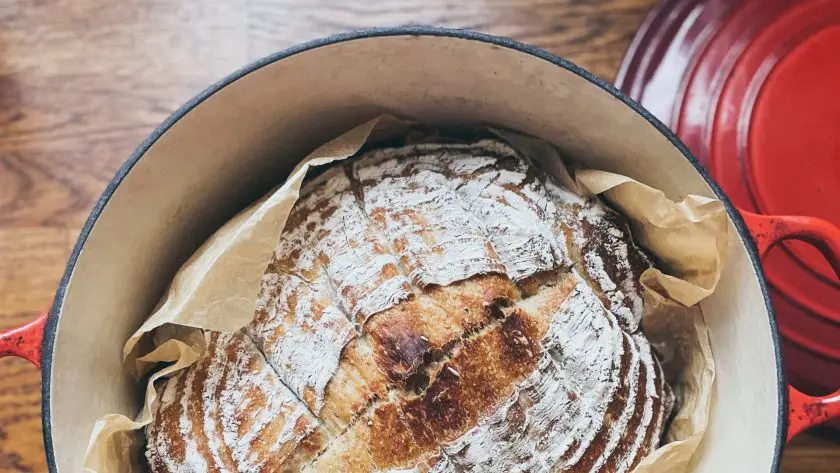
Proofing Techniques for Enhanced Sour Flavor
After the bulk fermentation, the proofing stage is key for developing tangy sourdough flavor. Proofing gives the shaped dough time to relax and continue fermenting before baking. Using certain techniques can intensify pleasant sourness.
Extend Proofing Time
Allow the loaf to proof for 1-4 hours depending on temperature, dough hydration and desired sourness. Longer proofing equals more time for microbial activity and acid production.
For a moderately sour loaf, proof for 2-3 hours. For a very sour loaf, extend proofing to 4 hours or more if needed for dough to become airy.
Retard in the Fridge
Chilling the shaped dough in the fridge overnight is a great way to extend fermentation while controlling proofing. The cold temperature slows yeast activity while allowing more acidic flavors to develop.
When ready to bake, remove the dough and let it warm up on the counter for 1-2 hours before baking. The extended ferment gives fantastic depth of flavor.
Monitor Temperature
The temperature during proofing affects the microbial balance. Cooler temps of 65-68°F favor more lactic acid bacteria activity and a tangier rise. Warmer temps allow more yeast growth for milder sourness.
For maximum sour punch, proof dough in the fridge or a cool cellar around 55°F. For mellower sourness, proof at 70-78°F.
Humidity is Helpful
Creating a humid environment during proofing enables the dough to fully ferment without drying out. High humidity prevents the formation of a dried skin which can inhibit expansion.
Place dough in a closed proofer, or simply cover with plastic wrap or a damp towel. The moisture aids oven spring.
Gently Degas Before Proofing
After shaping, let the loaf rest for 30 minutes to relax the gluten. Then gently press out large air pockets to refine the crumb structure before final proofing.
This degassing step allows for even fermentation and rise. But avoid over-degassing or it will deflate the dough.
Score Decoratively
Scoring the surface decoratively before baking isn’t just for looks! It also allows expansion near the score marks during oven spring.
Make scores 1⁄4-1⁄2 inch deep in flour designs. Common cuts are a square, leaf, wheat shaft or your initials. Scoring enables the true sourdough flavor to shine.
Baking Techniques for Maximizing Sourness
While most sourdough flavor develops during fermentation, certain baking methods can help achieve maximum sourness in the finished loaf. From steam to temperature control, how you bake affects that tang.
Bake at High Temp First
Baking at a high temperature of 475-500°F for the first 10-15 minutes enables the best oven spring and crust development. The initial blast of heat sets the structure quickly before acids soften the dough, locking in sour flavor.
The high heat also rapidly evaporates moisture. This creates steam which expands the bubbles, increasing rise and opening up the crumb to release more sour aroma.
Lower Oven Temp
After the initial high-temp kickoff, lower the oven to 400-425°F for the remainder of baking time. The more moderate temp finishes bakes the center without over-browning the crust, preventing burnt flavor from overriding the sourness.
Aim for an internal center temperature of 205-210°F for the loaf to be fully baked. Check with an instant-read thermometer.
Create Steam
Generating steam in the early minutes of baking helps the loaf fully expand before the crust sets. Place a steaming pan with water on the bottom oven rack.
Or before loading the loaf, spray the oven walls with water. The extra moisture aids oven spring and open crumb, allowing sour notes to come through.
Score Decoratively
Scoring the top allows the dough to expand more during baking to release additional sour aroma. Make 1⁄4-1⁄2 inch deep cuts in flourishes like leaves or diamonds.
Well-shaped sourdough scores open attractively and showcase the interior texture. Plus they enable more steam to escape from the middle.
Shape Tightly
A firmly shaped, taut loaf retains the dough’s gasses better during baking. This prevents bubbles from breaking too early, enhancing rise and crumb structure which highlights tasty sourness.
Shape with well-floured hands and use a bench scraper to tighten the surface. The tighter the shape, the better the oven spring and sour flavor.
Bake in Dutch Oven
Baking in a preheated covered Dutch oven mimics the benefits of a steamy oven. It creates a humid environment that boosts rise before uncovering to finish baking and develop sour notes.
Remove the cover about halfway through baking to let the crust properly brown. This gives the benefits of steam without sacrificing crust development.
Maximize Browning
A properly browned crust indicates well-developed flavor. The Maillard reactions produce nutty, toasty notes complementing the sourness.
An evenly browned crust shows the bread baked thoroughly to bring out tangy taste. Err on the side of slightly darker versus too pale for the most flavor.
Cool Completely
Allow the loaf to cool fully before cutting, at least 2-3 hours. This prevents the crumb from becoming gummy and losing sour zing.
Full cooling enables the flavors to settle and the texture to stabilize before slicing. Proper cooling maximizes the effect of your baking craft.
Pairing Sourdough with Foods to Enhance Sourness
Sourdough’s tangy flavor profile pairs beautifully with certain ingredients and dishes that complement and enhance its sour essence. Smart food pairings prevent the sourness from becoming overwhelming while allowing its bright notes to shine.
Sharp Cheeses
Tangy sourdough loves the company of equally sharp cheeses like aged cheddar, Parmesan, blue cheese, feta and goat cheese. The bold flavors balance each other out.
Soften some blue cheese on a sourdough cracker for a match made in heaven!
Cured Meats
From salami to prosciutto, the salty umami notes of cured and smoked meats are terrific with sourdough’s acidity. The contrasts in texture and flavor make these pairings extra satisfying.
Stack thin slices of sourdough, cured meat, and cheese for an iconic sourdough sandwich.
Vinegary Foods
Since sourdough has hints of acetic acid reminiscent of vinegar, it goes well with inherently vinegary foods.
Splash some balsamic vinegar on a sourdough crostini, or serve a tangy sourdough panzanella salad with a red wine vinaigrette. The similar sour flavors complement each other beautifully.
Tart Fruits
The pleasant fruit acidity of citrus fruits, berries, pomegranates, and stone fruits like plums and cherries balance sourdough’s sourness.
Try a sandwich with turkey, tangy cranberry sauce, and sourdough. Or top your slice of sourdough with fresh ricotta, lemon zest, and fig jam.
Hearty Proteins
Earthy, fatty proteins like chicken, pork, salmon, and grass-fed beef stand up well to assertive sourdough. The hearty flavors and textures pair nicely with the chewy, sour bread. Think pulled pork sandwiches on big slices of sourdough.
Nut Butters and Jams
For breakfast or tea time, slather some peanut butter and berry jam on sourdough toast. The sweet fruity jam combined with the nutty butter perfectly complement the bready sourness. Almond butter with orange marmalade is another great combo.
Chocolate
The pleasant bitterness of dark chocolate contrasts the sourness of sourdough beautifully.
Spread some chocolate hazelnut spread on sourdough for an upscale riff on Nutella toast! Or dip sourdough croutons into a rich melted chocolate fondue.
Creamy Full-Fat Dairy
Rich, indulgent dairy products like butter, cream cheese, sour cream, and full-fat yogurt or kefir mellow out sourdough’s acidity. Enjoy your sourdough with cultured butter and a smear of cream cheese for a little balancing luxury.
In fact, I’ve got a Rustic Rye Sourdough Bread With Milk Kefir recipe you should try!
Health Benefits of Sour Sourdough Bread
Beyond being a delicious sour tasting bread, sourdough’s signature acidity also provides some great health perks. From improved digestion to probiotic benefits, sourdough offers nutritional advantages over other breads.
A balanced, diverse microbiome is crucial for overall health. Sourdough’s probiotic contribution is an added boon.
With its stellar nutrition and digestibility, tangy artisanal sourdough provides health perks beyond basic breads. Its slow fermentation unlocks more nutrients and makes them easier to absorb. Sourdough’s distinctive sourness equals big digestive benefits.
There are Many Ways to Make Sourdough More Sour
Sourdough’s unique tang comes from organic acids that form while it ferments. The big players here are lactic and acetic acids. These acids get made by tiny microbes doing their thing, and the longer they work, a more sour tasting bread we get.
Things like how lively your starter is, the kitchen’s temperature, how much water you use, and the type of flour all play a part in that increase tanginess. A really active starter means more acids, and cooler temperatures favor those lactic acid-making bacteria. Go for whole grain or rye flours if you’re after a stronger sourness, and a wetter dough also ups the acid ante. Tasting your starter and dough as they ferment is like checking in on a science experiment – it helps you nail that perfect sour level. Mastering fermentation lets you bake homemade sourdough bread that’s a symphony of tangy, complex flavors.
Play around with these elements yourself to create your own signature loaves, from just-a-hint-of-sour to super tangy!
More Sour Flavor Sourdough FAQs
Can You Make Sourdough More Sour?
Absolutely! Sourdough’s signature tang comes from organic acids produced during fermentation. By using whole grain flours, allowing for longer fermentation times, keeping starter and dough temperatures cooler, and manipulating hydration, bakers can intentionally increase sourdough’s acidity and amplify its pleasantly sour flavor. With the right techniques, you can transform your sourdough from mild to thrillingly tart.
Why is My Sourdough Not Sour Anymore?
Having a high ratio of starter-to-flour speeds up the fermentation process which can make sourdough less sour-tasting.
What Ingredient Makes Sourdough Bread More Sour?
The signature sourdough flavours come from a combination of lactic and acetic acids, created as the dough rises and ferments. Refrigerating the dough encourages the production of more acetic acid, with is more tangier.
What Makes San Francisco Sourdough so Sour?
San Francisco sourdough tastes sour because of a unique local bacteria called lactobacillus.
How Do You Increase the Acidity of Sourdough?
To make your sourdough more acidic and tangy, use more whole grain flours, allow for longer fermentation times up to 12 hours, ferment dough and starter at cooler temperatures between 65-75°F, maintain a mature active starter, increase dough hydration to at least 75%, and reduce the salt to 1.5-2% of flour weight.
Can You Add Vinegar to Sourdough Bread?
It’s not recommended to add vinegar directly to sourdough dough or starter. The acids in vinegar can impede yeast activity and dough rise. Instead, bakers can encourage more acetic acid production naturally through warmer fermentation temperatures and increased oxygen exposure.


